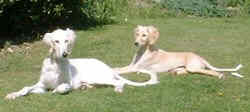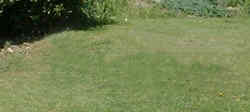Week 01 – Whole Numbers
Whole Numbers are simply the numbers 0, 1, 2, 3, 4, 5, … (and so on)
No Fractions!
Examples: 0, 7, 212 and 1023 are all whole numbers
(But numbers like ½, 1.1 and 3.5 are not whole numbers.)
Counting Numbers
Counting Numbers are Whole Numbers, but without the zero. Because you can’t “count” zero.
So they are 1, 2, 3, 4, 5, … (and so on).
Natural Numbers
“Natural Numbers” can mean either “Counting Numbers” {1, 2, 3, …}, or “Whole Numbers” {0, 1, 2, 3, …}, depending on the subject.
Integers
Integers are like whole numbers, but they also include negative numbers … but still no fractions allowed!
So, integers can be negative {-1, -2,-3, -4, -5, … }, positive {1, 2, 3, 4, 5, … }, or zero {0}
We can put that all together like this:
Integers = { …, -5, -4, -3, -2, -1, 0, 1, 2, 3, 4, 5, … }
Examples: −16, −3, 0, 1 and 198 are all integers.
(But numbers like ½, 1.1 and 3.5 are not integers)
These are all integers (click to mark), and they continue left and right infinitely:
Some People Have Different Definitions!
Some people (not me) say that whole numbers can also be negative, which makes them exactly the same as integers.
And some people say that zero is NOT a whole number. So there you go, not everyone agrees on a simple thing!
My Standard
I usually stick to this:
|
Name
|
Numbers
|
Examples
|
|
Whole Numbers
|
{ 0, 1, 2, 3, 4, 5, … }
|
0, 27, 398, 2345 |
|
Counting Numbers
|
{ 1, 2, 3, 4, 5, … }
|
1, 18, 27, 2061 |
|
Integers
|
{ … -5, -4, -3, -2, -1, 0, 1, 2, 3, 4, 5, … }
|
-15, 0, 27, 1102 |
And everyone agrees on the definition of an integer, so when in doubt say “integer”.
And when you only want positive integers, say “positive integers”. It is not only accurate, it makes you sound intelligent. Like this (note: zero isn’t positive or negative):
- Integers = { …, -5, -4, -3, -2, -1, 0, 1, 2, 3, 4, 5, … }
- Negative Integers = { …, -5, -4, -3, -2, -1 }
- Positive Integers = { 1, 2, 3, 4, 5, … }
- Non-Negative Integers = { 0, 1, 2, 3, 4, 5, … } (includes zero, see?)
The Evolution of Numbers

I want to take you on an adventure …
… an adventure through the world of numbers.
Let us start at the beginning:
Q: What is the simplest idea of a number?
A: Something to count with!
The Counting Numbers
We can use numbers to count: 1, 2, 3, 4, etc
Humans have been using numbers to count with for thousands of years. It is a very natural thing to do.
- You can have “3 friends”,
- a field can have “6 cows”
- and so on.
So we have:
Counting Numbers: {1, 2, 3, …}
And the “Counting Numbers” satisfied people for a long time.
Zero
The idea of zero, though natural to us now, was not natural to early humans … if there is nothing to count, how can we count it?
Example: we can count dogs, but we can’t count an empty space:
 |
 |
|
| Two Dogs | Zero Dogs? Zero Cats? |
|---|
An empty patch of grass is just an empty patch of grass!
Placeholder
But about 3,000 years ago people needed to tell the difference between numbers like 4 and 40. Without the zero they look the same!
So they used a “placeholder”, a space or special symbol, to show “there are no digits here”
| 5 2 | So “5 2” meant “502”
(5 hundreds, nothing for the tens, and 2 units) |
Number
The idea of zero had begun, but it wasn’t for another thousand years or so that people started thinking of it as an actual number.
But now we can think
“I had 3 oranges, then I ate the 3 oranges, now I have zero oranges…!”
Negative Numbers
But the history of mathematics is all about people asking questions, and seeking the answers!
One of the good questions to ask is
“if we can go one way, can we go the opposite way?”
We can count forwards: 1, 2, 3, 4, …
| … but what if we count backwards:
3, 2, 1, 0, … what happens next? |
 |
The answer is: we get negative numbers:
Now we can go forwards and backwards as far as we want
But how can a number be “negative”?
By simply being less than zero.
 |
A simple example is temperature.
We define zero degrees Celsius (0° C) to be when water freezes … but if we get colder we need negative temperatures. So -20° C is 20° below Zero. |

Negative Cows?
And in theory we can have a negative cow!
Think about this …If you had just sold two bulls, but can only find one to hand over to the new owner… you actually have minus one bull … you are in debt one bull!
So negative numbers exist, and we’re going to need a new set of numbers to include them …
Integers
If we include the negative numbers with the whole numbers, we have a new set of numbers that are called integers
Integers: {…, -3, -2, -1, 0, 1, 2, 3, …}
The Integers include zero, the counting numbers, and the negative of the counting numbers, to make a list of numbers that stretch in either direction indefinitely.
Summary
Here they are again:
| Type of Number | Quick Description |
|---|---|
| Counting Numbers | {1, 2, 3, …} |
| Whole Numbers | {0, 1, 2, 3, …} |
| Integers | {…, -3, -2, -1, 0, 1, 2, 3, …} |
| Rational Numbers | p/q : p and q are integers, q is not zero |
| Irrational Numbers | Not Rational |
| Real Numbers | Rationals and Irrationals |
| Imaginary Numbers | Squaring them gives a negative Real Number |
| Complex Numbers | Combinations of Real and Imaginary Numbers |
End Notes
History
The history of mathematics is very broad, with different cultures (Greeks, Romans, Arabic, Chinese, Indians and European) following different paths, and many claims for “we thought of it first!”, but the general order of discovery I discussed here gives a good idea of it.
Questions
And isn’t it amazing how many times that asking a question, like
- “what happens if we count backwards through zero”, or
- “what is the exact distance across the diagonal of the square”
first led to disagreement (and even ridicule!), but eventually to amazing breakthroughs in understanding.
I wonder what interesting questions are being asked now?
Over to You!
Here are two questions you can ask when you learn something new:
Can it go the other way?
- Positive numbers lead to negative numbers
- Squares lead to square roots
- etc
Can I use this with something else I know?
- If fractions are numbers, can they be added, subtracted, etc?
- Can I take the square root of a complex number? (can you?)
- etc
And one day your questions may lead to a new discovery!


